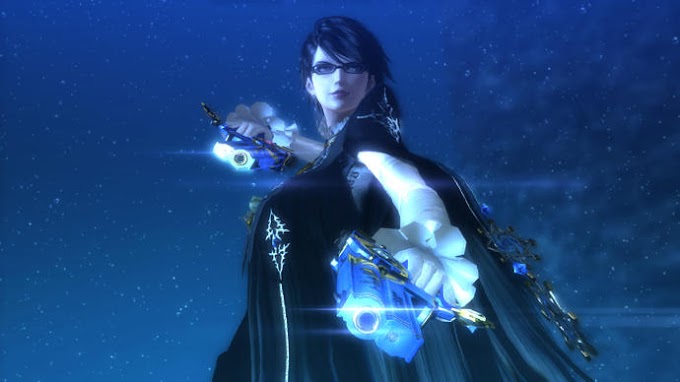Buried deep within this insect infested land, each playthrough of Hollow Knight feels and moves a little differently. There are no waypoints or story missions - there's not even a right or wrong way to play, really. Developer Team Cherry doesn't care where you go, or how you get there. Even how much of the story you see is up to you.
This lack of direction is overwhelming at first. Even though I'm the kind of player that naturally double-backs on where I think any given game wants me to go - someone who instinctively scours for secrets - the dozens of pathways and possibilities trouble me. As I wander through Hollow Knight's early hours it becomes more troubling still, and I start to worry that I may miss huge swaths of lore and collectibles - even whole areas, maybe? - if I'm not thorough enough. But as I adapt to the natural ebb and flow of Hollow Knight's rhythm and concentrate instead on what lies ahead, that anxiety melts away.
Hollow Knight is effortless in its presentation of a tragic world secreted within a subterranean kingdom. You'd be forgiven for confusing its stunning style for simplicity; though hand-painted in a dark, muted palette, your explorations are accompanied by a masterful score, the cartoon-like visuals are shockingly deceptive. Hollow Knight isn't interested in spoon-feeding you a story or holding your hand. Sure, it may look super cute, but beneath the quirky covers it is ruthlessly tough, even occasionally unfair.

It's at this point that I'd typically offer a little flavour of what the game's about but... well, it's never really that clear, to be honest. That's not a criticism, though; much of Hollow Knight isn't fully explained, at least not in a conventional way. But beyond being introduced to Hallownest - an underground insect kingdom besieged by the possessed husks of its former inhabitants - the game is peculiarly taciturn, with much of its story revealed only by the musings of the NPCs, the set-pieces, and the flavour-text of the collectibles you gather along the way. While it's wholly refreshing to experience a game so confident in its own environmental storytelling, it runs the risk of delivering its tale in segments too disparate to patch together.
There's some who don't like the stoic suffering of a silent protagonist, but I'm not one of them. Your nameless knight traverses the kingdom with a gritty, silent determination as they chop through the waves of enemies. Through the traditional dungeon-exploration you'll unlock dozens of interconnecting areas, each with their own signature enemies, environs, and - sometimes - boss fights. It pays to be a good listener, too; revisits to the friends and fauna you meet along your travels will reveal additional details to help you put meat on the bones of this otherwise skeletal story.

Recovery comes by way of either a brief respite on one of the ornate benches sprinkled throughout the kingdom, or by consumption of the souls you collect, the meter for which slops around like an unsteady goblet of milk in the top right-hand corner of your screen. It's this that gives Hollow Knight its "Souls-like" moniker, and though its initially straight-forward, you'll find it increasingly more inconvenient to hunker down and recuperate, particularly in a boss battle. And it won't take much to put you down permanently; your mistakes are rarely forgivable, and death wipes out not just your souls, but also every penny of your hard-earned Geo, the in-game currency, until you find - and defeat - your own ghostly remains.
But recovery is not the only way to utilise that Soul goo, though. Later on you'll unlock special abilities that can be used to boost combat, and it's a fabulously tough dilemma, choosing between defensive and offensive moves in boss-battle scenarios. What's best - using up your soul-mana to fire off some brutal special moves, or keeping it to replenish your health and help ensure you don't succumb to the fight?

It's brutal, though, in that special, warped way that the very best Metroidvanias always are. Right about the time you hit the Mantis Village the difficulty ramps up. In the early hours - while never particularly easy exactly - the boss fights are surmountable thanks to the predictable choreography of your enemy. As you progress, however, your foes movements are less orchestrated, and aren't quite as vulnerable to your ability to stun them, truncating opportunities to double-down and heal mid-battle.
Consequently, the pacing doesn't feel quite right. The constant cycle of bash-dash-defeat feels wonderfully thrilling at first, but as your abilities and confidence grow, they come at the expense of meaningful progression. Though each area has distinct visual and aural landscapes - with some truly impressive shortcuts and back entrances secreted around to help sooth the pain of backtracking - you'll soon learn that some enemies can be dispatched in the same old way, and that the game's sandbox-esque conceit gets in the way of the story, scant as it is.
There's so much more to talk about: the quirky cast, the stunning, subtle setpieces, the special abilities, the colosseum, the grubs (oh, I love them so), but really, this is a journey tailormade for exploration and self-discovery, so rather than read about it, I can only urge you to play it. If you've been looking for a polished platformer (and can take on a tough little Metroidvania without screaming in anger or frustration), put this on your wishlist, or better still, grab it now. You won't regret it.





0 Comments